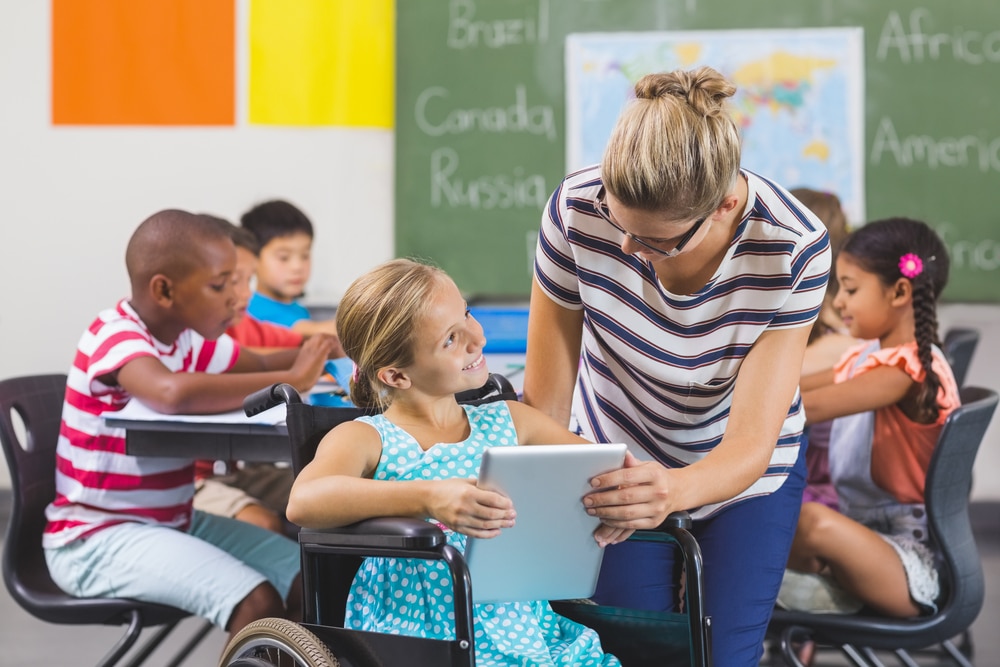Enhancing learning for students with disabilities

Empowering learners with special needs requires innovative approaches that accommodate their unique learning styles. This blog explores strategies to augment education for students with disabilities, making learning accessible and engaging for everyone.
One practice that stands out for its versatility and effectiveness is outdoor exercise. This activity not only promotes physical health but also stimulates cognitive development and emotional well-being, making it a vital component of an inclusive learning environment.
Understanding the Impact of Disabilities on Learning
Students with disabilities often face significant barriers in traditional learning environments. These challenges can range from physical obstacles to difficulties in processing information in the same way as their peers.
It's crucial to recognize that each student has unique needs. Tailoring educational approaches to fit these diverse learning styles is fundamental for their success.
To truly enhance learning for these students, educators must employ a variety of methods, materials, and technologies.
Integrating outdoor exercise into the curriculum is one such method that offers multiple benefits, aligning perfectly with the focus on inclusive education.
Outdoor Exercise: A Key to Inclusive Education
Outdoor exercise, a critical aspect of augmenting learning for students with special needs, serves as both a physical activity and a learning opportunity. It's not simply about physical development but also about enhancing cognitive skills and emotional well-being.
Engaging in activities such as walking, running, or playing games in an outdoor setting can significantly improve concentration, mood, and learning outcomes for these students.
Moreover, outdoor exercise fosters social interactions, encouraging students to communicate, collaborate, and support each other, which is essential for building self-esteem and social skills.
Strategies for Incorporating Outdoor Exercise
To effectively integrate outdoor exercise into learning, schools can start by designing accessible outdoor spaces. These areas should be safe and accommodate the needs of students with various disabilities.
Teachers can collaborate with physical education instructors to create inclusive outdoor activities that align with educational goals. Whether it's a science class in the garden or a history lesson on the go, outdoor exercise can be a part of learning.
Parental involvement is also critical. Schools can organize workshops and provide resources to help parents understand the benefits of outdoor exercise and how they can support their child’s learning at home.
Technology can enhance these efforts, with apps and devices that track progress, customize activities, and make learning more interactive and fun.
Regularly scheduled outdoor activities should be part of the school curriculum, ensuring all students can participate and benefit from them.
Evidence-Based Benefits of Outdoor Exercise
Research shows that regular physical activity, especially in natural settings, can significantly benefit students with disabilities. It enhances physical health, cognitive function, and emotional well-being.
Outdoor exercise has been linked to improved attention, better mood, and reduced symptoms of anxiety and depression among these students.
Additionally, learning in an outdoor environment can lead to greater engagement and motivation, and consequently, better academic achievements.
Physical activities in the open air also support the development of motor skills and coordination, which are often areas of difficulty for students with special needs.
Overcoming Challenges to Implement Outdoor Exercise
While the advantages are clear, integrating outdoor exercise into the learning experience for students with disabilities can present challenges. These might include lack of resources, inclement weather, or safety concerns.
Overcoming these obstacles requires creative problem-solving, community involvement, and leveraging technology. For instance, virtual reality (VR) can bring the outdoors inside during bad weather.
Accessibility is paramount. Modifications and aids should be available to ensure that all students can participate in these activities regardless of their physical abilities.
Partnerships with local organizations can provide additional resources and support for schools striving to enhance their outdoor learning programs.
Keys to Success
Dedication from educators, support from the community, and involvement from families are crucial for the successful integration of outdoor exercise into educational programs for students with disabilities.
Continuous assessment and adaptation of these programs will ensure that they meet the evolving needs of students and maximize the benefits of outdoor learning activities.
With the right approach, outdoor exercise can be a powerful tool to support inclusive education, helping students with disabilities thrive academically and personally.
Ultimately, the goal is to foster an educational environment where every student has the opportunity to succeed, regardless of their challenges.
In conclusion, enhancing learning for students with disabilities through outdoor exercise is not just beneficial but necessary for creating a truly inclusive educational environment. By embracing this strategy, educators can ensure that all students have equal opportunities to grow, learn, and succeed. As we move forward, let us commit to finding innovative and inclusive ways to support the educational journey of every student.

Related